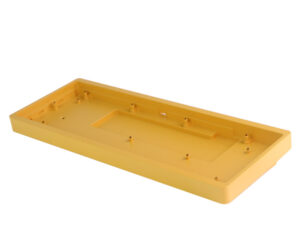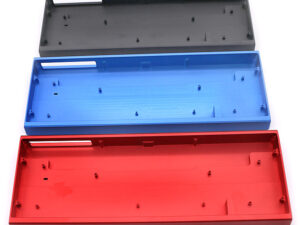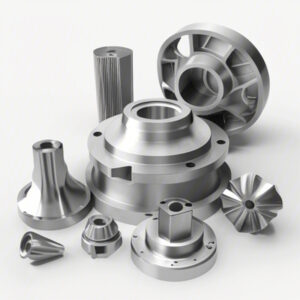When working with aluminum alloys, CNC machining combined with anodizing is a widely used process for producing high-quality parts with enhanced surface properties. However, one issue that frequently arises and frustrates manufacturers is the occurrence of uneven oxide film thickness after anodizing. This inconsistency not only affects the appearance of the parts but can also compromise their performance, durability, and customer satisfaction.
In this article, I’ll explore the root causes of uneven oxide film thickness on aluminum alloys post-CNC machining, explain its impact, and provide actionable solutions to tackle the issue effectively. Whether you’re an experienced machinist or a manufacturer looking to perfect your process, this guide offers practical insights based on real-world experiences.
What Causes Uneven Oxide Film Thickness in Aluminum Alloy CNC Machining?
Uneven oxide film thickness is a multifaceted issue caused by various factors during both the CNC machining and anodizing stages. Below are the most common culprits, along with detailed explanations:
1. Surface Variability from CNC Machining
CNC machining, while precise, can sometimes leave surface irregularities that affect how the anodizing process interacts with the part. For instance:
- Tool Marks: Imperfect cutting tools or improper feed rates can leave microscopic marks or variations on the surface, which create inconsistencies during anodizing.
- Residual Stress: High-speed machining can induce stress into the material, altering its surface characteristics and leading to uneven anodizing results.
How to Prevent Surface Variability:
- Use sharp, well-maintained tools to achieve a uniform surface finish.
- Optimize machining parameters like feed rate and spindle speed to reduce surface stress.
- Consider secondary finishing processes such as polishing or deburring to ensure a smooth and consistent surface before anodizing.

2. Material Composition and Alloy Type
Not all aluminum alloys anodize equally. Some alloys contain elements like copper, zinc, or silicon, which can affect the oxide layer’s formation. For example:
- High Copper Content: Alloys with a high copper percentage are prone to discoloration and uneven anodizing.
- Inconsistent Alloy Composition: Variations in the alloy composition from one batch to another can result in differences in how the oxide layer forms.
How to Address Material Issues:
- Select aluminum alloys specifically formulated for anodizing, such as 6061 or 6063, which are known for their uniform oxide layers.
- Work with reputable suppliers who can provide consistent and high-quality material.
- Conduct material tests to ensure the alloy composition is within acceptable parameters.
3. Inconsistent Cleaning and Pre-Treatment
Before anodizing, aluminum parts undergo cleaning and pre-treatment to remove oils, dirt, and oxide layers. Any inconsistency during this step can lead to uneven anodizing results. For instance:
- Residual Contaminants: Leftover machining oils or particles can prevent the anodizing solution from evenly reacting with the surface.
- Improper Etching: Inconsistent etching during pre-treatment can create uneven surface textures, affecting oxide thickness.
Tips for Effective Cleaning and Pre-Treatment:
- Use ultrasonic cleaning or degreasing solutions to thoroughly clean the parts.
- Ensure consistent etching by monitoring the etching bath’s concentration and temperature.
- Rinse parts thoroughly after each pre-treatment stage to prevent chemical residues.
4. Variable Anodizing Process Parameters
The anodizing process involves several key parameters, including voltage, electrolyte concentration, and temperature. Variations in any of these can result in uneven oxide layers. For example:
- Uneven Current Distribution: Inconsistent electrical contact or part positioning can lead to varying current densities, resulting in different oxide thicknesses across the part.
- Temperature Fluctuations: Variations in the anodizing bath temperature can alter the growth rate of the oxide film.
How to Ensure Uniform Anodizing:
- Use high-quality fixturing systems to ensure proper electrical contact and consistent current distribution.
- Maintain a stable bath temperature by using temperature control systems.
- Regularly monitor and adjust the anodizing bath composition to ensure it remains within optimal parameters.

5. Design and Geometry Challenges
The shape and design of the part can also contribute to uneven oxide thickness. For example:
- Sharp Edges: Edges and corners tend to attract more current, resulting in thicker oxide layers in these areas.
- Deep Grooves or Cavities: These areas may receive less current, leading to thinner oxide layers.
Design Tips to Minimize Anodizing Issues:
- Design parts with smooth transitions and rounded edges to encourage even current flow.
- Avoid overly deep grooves or narrow cavities that may hinder the anodizing process.
- Consider using simulation software to predict how anodizing will interact with the part’s geometry.
The Impact of Uneven Oxide Film Thickness
Uneven anodizing can lead to several problems that negatively impact both the part’s functionality and aesthetics, including:
- Reduced Corrosion Resistance: Thinner oxide layers in certain areas may compromise the part’s ability to withstand corrosion.
- Aesthetic Flaws: Visible inconsistencies can detract from the part’s appearance, making it less appealing to customers.
- Inconsistent Durability: Variations in oxide thickness can lead to weak points that are more susceptible to wear or damage.
Addressing these issues not only improves product quality but also enhances customer satisfaction and reduces costs associated with rework or returns.
Solutions for Fixing Uneven Oxide Film Thickness
If uneven oxide film thickness occurs despite your best efforts, there are still ways to address the problem:
1. Reanodizing the Part
In cases where the oxide film is salvageable, reanodizing may help achieve a more consistent thickness. This involves stripping the existing oxide layer and reanodizing the part.
2. Post-Anodizing Treatments
Processes like polishing, bead blasting, or chemical sealing can help minimize visible inconsistencies and improve the overall appearance of the part.
3. Implementing Rigorous Quality Control
Establish quality control measures at every stage of production to catch and address issues before they escalate. Use tools like thickness gauges to measure oxide layer consistency.
Final Thoughts
Uneven oxide film thickness on aluminum alloy parts can be a frustrating problem, but it’s one that can be addressed with the right strategies. By focusing on optimizing CNC machining practices, selecting the right materials, and maintaining consistent anodizing parameters, you can significantly reduce the risk of this issue.
At yl-machining, we’ve helped countless clients overcome challenges like this by providing high-quality CNC machining and anodizing services. If you’re facing issues with uneven oxide thickness, feel free to reach out—we’re here to help.
So, have you experienced uneven oxide film thickness in your projects? What strategies have worked for you to tackle this issue? Let’s discuss in the comments below!




-300x225.jpg)


-300x225.jpg)




